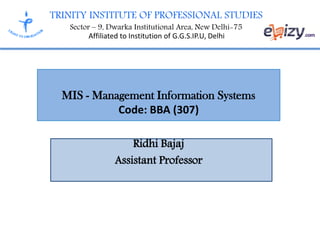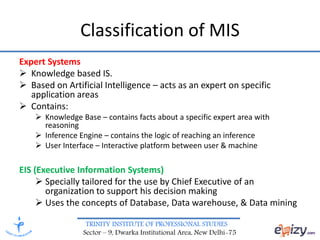The document discusses the syllabus for a Management Information Systems course at Trinity Institute of Professional Studies. It outlines 4 units that will be covered: (1) introduction to MIS and system types, (2) system development lifecycle and concepts, (3) information concepts and cost-benefit analysis, and (4) information technology including databases, data warehousing, and recent developments. It provides details on the topics that will be covered within each unit, such as transaction processing systems, decision support systems, and multimedia approaches.






















